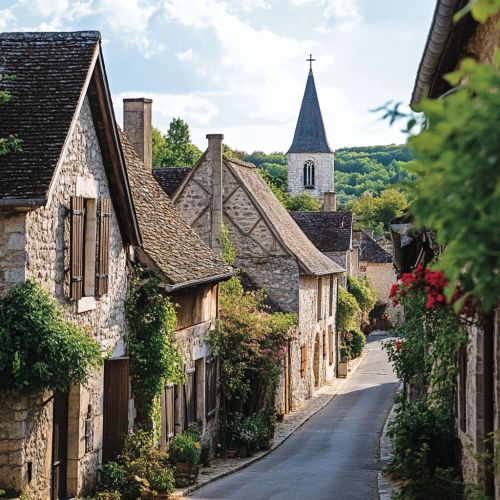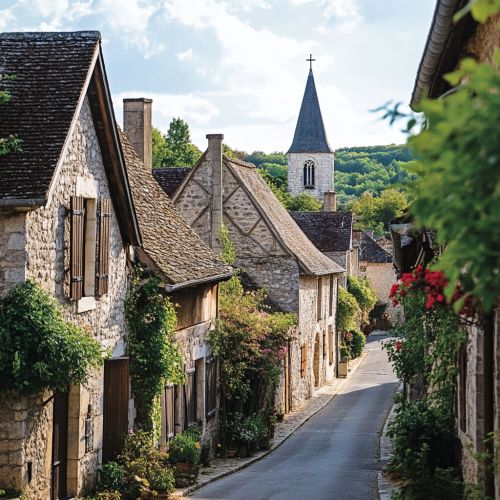Communes of France
Introduction
The communes of France represent the lowest level of administrative division in the French Republic. As of January 2021, there are 34,965 communes in metropolitan France and 129 in the overseas departments, making a total of 35,094 communes. These communes vary significantly in size and population, ranging from small villages with fewer than 100 inhabitants to large cities like Paris, Marseille, and Lyon.
Historical Background
The concept of the commune dates back to the French Revolution, which sought to dismantle the feudal system and establish a more egalitarian society. The Law of December 14, 1789 established the commune as the basic administrative unit, replacing the parishes and other feudal divisions. This law aimed to create a uniform system of local governance across France, ensuring that all citizens had equal access to public services and representation.
Administrative Structure
Governance
Each commune is governed by a municipal council, which is elected by the residents of the commune every six years. The council is headed by a mayor, who is elected by the council members. The mayor holds significant executive powers, including the implementation of council decisions, the administration of municipal services, and the maintenance of public order. The mayor also represents the state within the commune, performing functions such as civil registration and the enforcement of national laws.
Responsibilities
Communes are responsible for a wide range of local services, including urban planning, education, social services, and public transportation. They also manage local infrastructure such as roads, water supply, and waste management. The extent of these responsibilities can vary depending on the size and resources of the commune. Larger communes often have more extensive administrative structures and greater financial resources, allowing them to provide a wider range of services.
Demographic and Geographic Diversity
The communes of France exhibit significant diversity in terms of both population and geographic characteristics.
Population
The population of communes can vary widely. While some rural communes have fewer than 100 inhabitants, urban communes like Paris have populations in the millions. This disparity in population size has implications for the governance and resources of the communes. Smaller communes often face challenges related to limited financial resources and administrative capacity, while larger communes may struggle with issues related to urbanization and infrastructure.
Geographic Characteristics
Geographically, communes can range from densely populated urban areas to sparsely populated rural regions. The geographic characteristics of a commune can influence its economic activities, land use, and environmental management. For example, rural communes may be more focused on agriculture and natural resource management, while urban communes may prioritize industrial development and urban planning.
Intercommunal Cooperation
To address the challenges associated with the wide variation in commune sizes and resources, France has developed a system of intercommunal cooperation. This system allows communes to pool their resources and collaborate on projects and services that would be difficult to manage individually.
Types of Intercommunal Structures
There are several types of intercommunal structures in France, including communautés de communes, communautés d'agglomération, and communautés urbaines. These structures vary in terms of their scope and the degree of integration among member communes.
- **Communautés de communes**: These are the most common form of intercommunal cooperation, typically involving rural or semi-rural communes. They focus on economic development, infrastructure, and environmental management.
- **Communautés d'agglomération**: These structures are formed by groups of communes with a combined population of at least 50,000, including at least one commune with a population of 15,000 or more. They have broader responsibilities, including urban planning, housing, and public transportation.
- **Communautés urbaines**: These are the most integrated form of intercommunal cooperation, involving large urban areas with populations of at least 250,000. They have extensive powers and responsibilities, often comparable to those of a city government.
Financial Aspects
The financial management of communes is a critical aspect of their governance. Communes derive their revenue from several sources, including local taxes, state grants, and fees for services.
Local Taxes
Local taxes are a significant source of revenue for communes. These include property taxes, business taxes, and local service taxes. The rates and bases of these taxes can vary significantly between communes, reflecting differences in local economic conditions and policy choices.
State Grants
The French state provides various grants to communes to support their operations and development projects. These grants are designed to ensure a degree of financial equity among communes, helping to offset disparities in local tax bases. The most significant of these grants is the general operating grant (dotation globale de fonctionnement), which is distributed based on factors such as population, geographic characteristics, and social needs.
Fees for Services
Communes also generate revenue through fees for services such as water supply, waste management, and public transportation. These fees are typically set at levels that cover the cost of providing the services, although some communes may choose to subsidize certain services to make them more affordable for residents.
Legal Framework
The legal framework governing communes is established by both national legislation and local regulations. Key pieces of national legislation include the Code général des collectivités territoriales (General Code of Local Authorities) and various laws related to specific aspects of local governance.
Autonomy and Oversight
While communes have a significant degree of autonomy in managing their affairs, they are also subject to oversight by the state. This oversight is primarily exercised by the prefect, a state-appointed official who represents the national government at the departmental level. The prefect has the authority to review the legality of commune decisions and to intervene in cases of financial mismanagement or other serious issues.
Legal Disputes
Legal disputes involving communes are typically handled by administrative courts, which have jurisdiction over matters related to public administration. These courts can rule on issues such as the legality of municipal decisions, disputes over local taxes, and conflicts between communes and other levels of government.
Challenges and Reforms
The system of communes in France faces several challenges, including issues related to financial sustainability, administrative capacity, and intercommunal cooperation. In response to these challenges, various reforms have been proposed and implemented over the years.
Financial Sustainability
One of the key challenges facing communes is financial sustainability. Many small communes struggle to generate sufficient revenue to cover their expenses, leading to reliance on state grants and intercommunal cooperation. Reforms aimed at improving financial sustainability have included measures to enhance local tax bases, increase the efficiency of public services, and promote economic development.
Administrative Capacity
Another challenge is the administrative capacity of communes, particularly smaller ones. Limited financial and human resources can make it difficult for these communes to effectively manage their responsibilities. Reforms in this area have focused on providing training and support for local officials, encouraging intercommunal cooperation, and streamlining administrative processes.
Intercommunal Cooperation
While intercommunal cooperation has helped to address some of the challenges facing communes, it also presents its own set of issues. These include questions about the distribution of power and resources among member communes, the complexity of managing intercommunal structures, and the need to balance local autonomy with the benefits of cooperation. Reforms have sought to clarify the roles and responsibilities of intercommunal structures, improve their governance, and ensure that they are responsive to the needs of their member communes.
Conclusion
The communes of France are a fundamental aspect of the country's administrative and political system. They provide a wide range of local services, represent the interests of their residents, and contribute to the overall governance of the French Republic. Despite facing various challenges, the system of communes continues to evolve and adapt, reflecting the changing needs and priorities of French society.


